Thingiverse
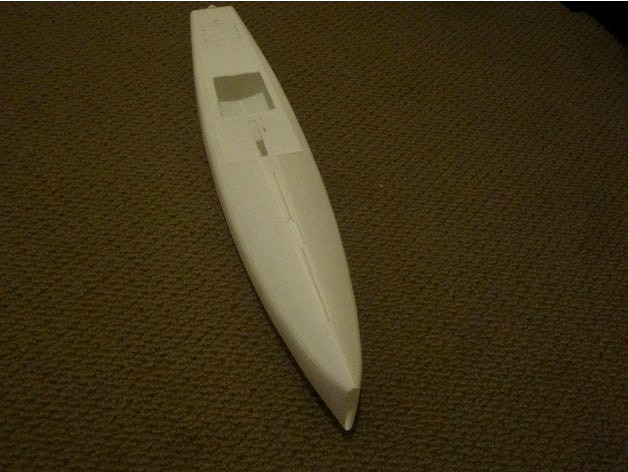
NANO 500 Class RC YACHT by ebdill
by Thingiverse
Last crawled date: 3 years ago
PLEASE NOTE
New files added 2-10-2017
IT WORKS!!!
PLAtypus (a good Aussie name!) was test sailed today 9.8.2017 in 5 - 12 km/hr variable breeze with #1 rig (80% fractional rig, main luff 850 mm, 200 mm foot on both sails) against a competitive RG65 and a DF65. Didn't lose out noticeably against the RG (apart from the stronger gusts) and equal or better than the DF. Well balanced and easily sailed in these conditions. As sailed and in pic, this yacht currently has a laminex fin modified from another small yacht. The boat was left in the sun and this caused some hollows to form near the stern of the hull (PLA is a thermoplastic material). Cover the hull if leaving in the sun!!! Print using a light colour so less heat is absorbed; could trial other materials such as PLA Plus which can be heat treated in an oven (80 deg. C for 45 mins) to improve heat resistance and mechanical properties.
Recent changes:
Uploaded pic of my nearly finished yacht 4/8 2017; added Delta bulb sections and Gooseneck/main boom files.
IMPORTANT: If you have downloaded the original files, note that the HULL, FIN, FIN CASE and MAST TUBE files have been replaced with ones to suit the latest hull design, and a DELTA BULB included which will float the hull to the designed all up weight (though with a larger surface area than a conventional bulb).
Apologies to those who have commenced printing with the original hull files which produced a hull which would not float to my designed weight of around 850g ready to sail.
If you have downloaded the hull files and have not commenced printing you can increase the volume slightly by scaling transversely say 110% and vertically 115% (hull around 104 mm wide). These figures will float the yacht at correct LWL for overall weight of around 850g.
I have now posted new hull files which will float the yacht to its designed waterline at an overall weight of around 850g. If you wish to carry more lead weight, scale the hull further in the Y (transverse) axis - scaling the Y axis by a further factor of around 117% will produce a hull of 120 mm width.
The fin/bulb weighed 510 g (only 60% ballast ratio) but a higher ballast ratio is desirable and could be achieved by using lighter booms and battery pack.
Note: The pic above does not show the recessed transom which I have redesigned for ease of fitting the rudder. Due to a number of requests for a hull design, I have posted my design for comment and printing. I have printed it, test floated and sailed it. Cut it into sections to suit your printer height, and print each section VERTICALLY (very important as it allows for no supports). You may need to design more ring frames for joining purposes depending on your printer (unless your printer can print 500 + mm high, then you can print in one piece). I printed in two sections, the stern at 270 mm long, and the bow 225 mm long allowing for a 5 mm bumper, and I have included the files for them as well as the joining ring frame I used. An extrusion width of 0.48 produces a 63g hull, 0.65 produces a 98g hull (as for my prototype). I printed the rear section on its transom, with 2 bottom layers, 0 top layers, 1 perimeter, using vase mode. The bow was printed on its large end with 0 bottom layers, 0 top layers, 1 perimeter, vase mode. Could also print with 0% infill not using vase mode. The bow section includes a dovetail to take slides for jib swivel and jib sheet. No raft or supports are needed. The fin box slot and deck opening are located for you, as are positions for conventional and swing rigs and the rudder tube (CAD and 3D printing gives perfect alignment !!). I have now included other fixtures such as fin box, jib slides, rudder, fin, hollow bulbs ( fill with lead shot/resin mix), curved boom, boom ends, boom band, rudder top spigot and bow plug. I have not included servo platforms, or battery or receiver boxes which you will have to determine sizes for. This should give those interested something to start printing.
Some more info can be found on Wollongong Model Yacht Club website (WMYC - see Brian's Stuff). Enjoy.
New files added 2-10-2017
IT WORKS!!!
PLAtypus (a good Aussie name!) was test sailed today 9.8.2017 in 5 - 12 km/hr variable breeze with #1 rig (80% fractional rig, main luff 850 mm, 200 mm foot on both sails) against a competitive RG65 and a DF65. Didn't lose out noticeably against the RG (apart from the stronger gusts) and equal or better than the DF. Well balanced and easily sailed in these conditions. As sailed and in pic, this yacht currently has a laminex fin modified from another small yacht. The boat was left in the sun and this caused some hollows to form near the stern of the hull (PLA is a thermoplastic material). Cover the hull if leaving in the sun!!! Print using a light colour so less heat is absorbed; could trial other materials such as PLA Plus which can be heat treated in an oven (80 deg. C for 45 mins) to improve heat resistance and mechanical properties.
Recent changes:
Uploaded pic of my nearly finished yacht 4/8 2017; added Delta bulb sections and Gooseneck/main boom files.
IMPORTANT: If you have downloaded the original files, note that the HULL, FIN, FIN CASE and MAST TUBE files have been replaced with ones to suit the latest hull design, and a DELTA BULB included which will float the hull to the designed all up weight (though with a larger surface area than a conventional bulb).
Apologies to those who have commenced printing with the original hull files which produced a hull which would not float to my designed weight of around 850g ready to sail.
If you have downloaded the hull files and have not commenced printing you can increase the volume slightly by scaling transversely say 110% and vertically 115% (hull around 104 mm wide). These figures will float the yacht at correct LWL for overall weight of around 850g.
I have now posted new hull files which will float the yacht to its designed waterline at an overall weight of around 850g. If you wish to carry more lead weight, scale the hull further in the Y (transverse) axis - scaling the Y axis by a further factor of around 117% will produce a hull of 120 mm width.
The fin/bulb weighed 510 g (only 60% ballast ratio) but a higher ballast ratio is desirable and could be achieved by using lighter booms and battery pack.
Note: The pic above does not show the recessed transom which I have redesigned for ease of fitting the rudder. Due to a number of requests for a hull design, I have posted my design for comment and printing. I have printed it, test floated and sailed it. Cut it into sections to suit your printer height, and print each section VERTICALLY (very important as it allows for no supports). You may need to design more ring frames for joining purposes depending on your printer (unless your printer can print 500 + mm high, then you can print in one piece). I printed in two sections, the stern at 270 mm long, and the bow 225 mm long allowing for a 5 mm bumper, and I have included the files for them as well as the joining ring frame I used. An extrusion width of 0.48 produces a 63g hull, 0.65 produces a 98g hull (as for my prototype). I printed the rear section on its transom, with 2 bottom layers, 0 top layers, 1 perimeter, using vase mode. The bow was printed on its large end with 0 bottom layers, 0 top layers, 1 perimeter, vase mode. Could also print with 0% infill not using vase mode. The bow section includes a dovetail to take slides for jib swivel and jib sheet. No raft or supports are needed. The fin box slot and deck opening are located for you, as are positions for conventional and swing rigs and the rudder tube (CAD and 3D printing gives perfect alignment !!). I have now included other fixtures such as fin box, jib slides, rudder, fin, hollow bulbs ( fill with lead shot/resin mix), curved boom, boom ends, boom band, rudder top spigot and bow plug. I have not included servo platforms, or battery or receiver boxes which you will have to determine sizes for. This should give those interested something to start printing.
Some more info can be found on Wollongong Model Yacht Club website (WMYC - see Brian's Stuff). Enjoy.
Similar models
3dwarehouse
free

Small sailboat
...t #bow #jib #large #mainsail #mast #ocean #rudder #sail #sails #ship #simple #small #stern #summer #theuppertopsail #water #yacht
thingiverse
free

Sail Boat That Floats by Modeler139
...at when you blow from the side. this model should take around 2 hours when you print it at 1 precent infill and .2 mm layer hight
cg_trader
free

sailing boat hull
...
testing solidworks. yacht boat solid sailing hull sail watercraft transport other boat hull sail boat sailing boat sailing yacht
thingiverse
free

Footy Class R/C Yacht Green Hornet by BillHagerup
...t https://3dprintedradioyachts.com/ where you will also find much useful information on printing 3d boats from footy size to iom.
thingiverse
free

Luxury Yacht by iMack7
... lots of new files including the mast, boom, spreaders, rudder and keel. i've also included a high res mesh file of the hull.
3dwarehouse
free

30m Maxi Yacht
...ll carbon rotating mast and a 5ft bow pole that supports the assymetric kite. #boat #carbon #fast #hull #maxi #sail #water #yacht
3dwarehouse
free

Basic Sail Boat
...l boat
3dwarehouse
a basic boat can have a motor or a sail added #apartment #boat #jib #main #rudder #sail #sheet #tiller #water
cg_trader
free

Foiled 49er
... trader
some old stuff yacht boat sailing hull sail foil 49 49er watercraft other boat hull sail boat sailing boat sailing yacht
thingiverse
free

420 Isaf Sailing dinghy hull by Stefgran
...and the entire hull using support grid.
more informations about 420 international class here: http://www.420sailing.org
have fun!
cg_trader
free

WP SCOW500
...tempt fast hull sailing boat yacht watercraft transport recreational recreational watercraft boat hull sailing boat sailing yacht
Ebdill
thingiverse
free

Spreader for RC yacht by ebdill
...es. print horizontally lengthways. i used as printed but could abrade or fill with auto body filler and abrade for better finish.
thingiverse
free

RG65 Bulb Pattern by ebdill
...urately align them when making the plaster moulds. i didn't bother to smoothe them but worked on the lead bulb after casting.
Yacht
3ddd
$1

Yacht
...yacht
3ddd
яхта
yacht
archibase_planet
free

Yacht
...yacht
archibase planet
yacht sailing ship sailer
yacht - 3d model (*.gsm+*.3ds) for interior 3d visualization.
archibase_planet
free

Yacht
...yacht
archibase planet
yacht cutter seagoing craft
yacht n270508 - 3d model (*.gsm+*.3ds) for interior 3d visualization.
3ddd
$1

Yacht control
...yacht control
3ddd
yacht control
turbosquid
$200

Yacht
...t
turbosquid
royalty free 3d model yacht for download as max on turbosquid: 3d models for games, architecture, videos. (1296028)
turbosquid
$90

Yacht
...turbosquid
royalty free 3d model yacht for download as blend on turbosquid: 3d models for games, architecture, videos. (1492177)
turbosquid
$80

Yacht
...t
turbosquid
royalty free 3d model yacht for download as obj on turbosquid: 3d models for games, architecture, videos. (1402970)
turbosquid
$60

Yacht
...turbosquid
royalty free 3d model yacht for download as blend on turbosquid: 3d models for games, architecture, videos. (1504022)
archibase_planet
free

Yacht
...yacht
archibase planet
seagoing craft yacht
craft 3 n080508 - 3d model (*.gsm+*.3ds) for interior 3d visualization.
turbosquid
$100

Yacht
...id
royalty free 3d model yacht for download as png and blend on turbosquid: 3d models for games, architecture, videos. (1491650)
Nano
3d_export
$20

nano astronaut
...nano astronaut
3dexport
turbosquid
$29

robot nano
...bosquid
royalty free 3d model robot nano for download as 3ds on turbosquid: 3d models for games, architecture, videos. (1658714)
3ddd
free

iPod nano 4G
... nano 4g
3ddd
ipod , apple , плеер
ipod nano 4g
3d_export
$6

Nano Katana
...nano katana
3dexport
3ddd
free

iPod Nano
...ipod nano
3ddd
apple , плеер
d
turbosquid
$80

NANO CAR
... available on turbo squid, the world's leading provider of digital 3d models for visualization, films, television, and games.
turbosquid
$20

nano house
... available on turbo squid, the world's leading provider of digital 3d models for visualization, films, television, and games.
turbosquid
$18

nano house
... available on turbo squid, the world's leading provider of digital 3d models for visualization, films, television, and games.
turbosquid
$5

Ipod nano
... available on turbo squid, the world's leading provider of digital 3d models for visualization, films, television, and games.
3ddd
$1

iPod nano 6
...ipod nano 6
3ddd
apple , плеер
модель ipod nano 6, моделировался по чертежу.
500
turbosquid
$50

500
...500
turbosquid
royalty free 3d model 500 for download as on turbosquid: 3d models for games, architecture, videos. (1578463)
3d_export
$5
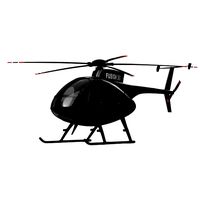
md 500
...md 500
3dexport
the md helicopters md 500 series is an american family of light utility civilian and military.
3d_export
$17

Helicopters MD 500
...helicopters md 500
3dexport
helicopters md 500
3ddd
$1

dreambox dm-500
...dreambox dm-500
3ddd
dreambox dm-500
3ddd
$1
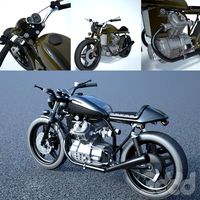
CX-500 Custom
...cx-500 custom
3ddd
honda , мотоцикл
cx-500 custom
3d_export
$8

tnk 500
...tnk 500
3dexport
office chair
turbosquid
$35

500 euro
...alty free 3d model 500 euro for download as max, obj, and stl on turbosquid: 3d models for games, architecture, videos. (1223365)
turbosquid
$20

FIAT 500
...yalty free 3d model fiat 500 for download as ma, obj, and fbx on turbosquid: 3d models for games, architecture, videos. (1490818)
3ddd
$1

500 Fifth Avenue
...500 fifth avenue
3ddd
статуэтка
статуэтка 500 fifth avenue, new york
turbosquid
$59

MSP 500
... available on turbo squid, the world's leading provider of digital 3d models for visualization, films, television, and games.
Rc
3ddd
$1

RC Helicopter
...rc helicopter
3ddd
вертолет
mini rc helicopter
93.329 polys
3d_export
$7
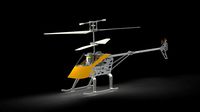
rc helicopter model
...rc helicopter model
3dexport
rc helicopter model
3d_ocean
$25
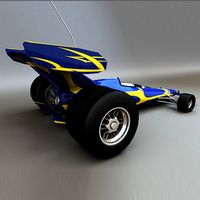
RC F1
...rc f1
3docean
auto car control f1 formula race rc remote speed
remote control f1 car
turbosquid
$10
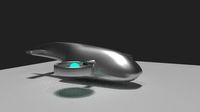
rc plane
...lane
turbosquid
free 3d model rc plane for download as blend on turbosquid: 3d models for games, architecture, videos. (1295828)
turbosquid
$100
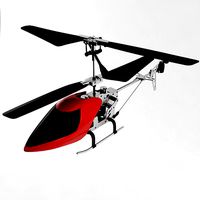
RC Helicopter
...free 3d model rc helicopter for download as 3ds, max, and obj on turbosquid: 3d models for games, architecture, videos. (1298511)
turbosquid
$59
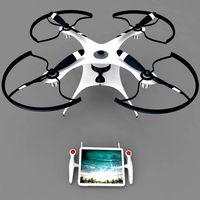
Drone with RC
...3d model drone with rc for download as 3ds, max, obj, and fbx on turbosquid: 3d models for games, architecture, videos. (1363601)
turbosquid
$75
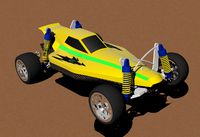
RC buggy
... available on turbo squid, the world's leading provider of digital 3d models for visualization, films, television, and games.
turbosquid
$39

RC Plane001
... available on turbo squid, the world's leading provider of digital 3d models for visualization, films, television, and games.
turbosquid
$30

RC Jet
... available on turbo squid, the world's leading provider of digital 3d models for visualization, films, television, and games.
turbosquid
$30
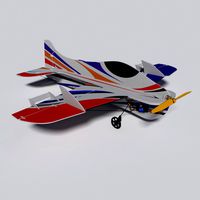
Rc airplane
... available on turbo squid, the world's leading provider of digital 3d models for visualization, films, television, and games.
Class
3d_export
free
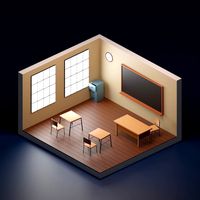
Class room
...class room
3dexport
class room 3d model
3ddd
free

Capellini / Class
...capellini / class
3ddd
capellini
стул class фирмы capellini
3ddd
free
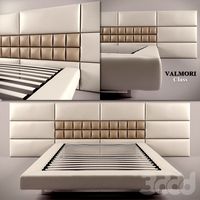
Valmori - Class
...valmori - class
3ddd
valmori
bed from valmori model class
3ddd
$1
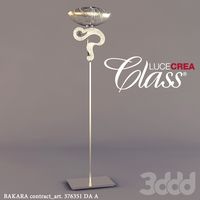
LUCECREA CLASS
...lucecrea class
3ddd
lucecrea class
торшер фабрики lucecrea class_коллекция
bakara contract_art.376351 da a
turbosquid
$15
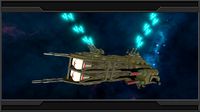
BaikaL class Frigate and UraL class Corvette
... available on turbo squid, the world's leading provider of digital 3d models for visualization, films, television, and games.
3ddd
$1

vibieffe class armchair
...vibieffe class armchair
3ddd
vibieffe
vibieffe class armchair
3ddd
$1

Baccarat Glass Class
...
источник:http://www.select-interiormarket.com/en/baccarat-glass-class-chair-2601025-philippe-starck
текстуры имеются
turbosquid
$85

Class Brooklyn
...alty free 3d model class brooklyn for download as jpg and max on turbosquid: 3d models for games, architecture, videos. (1461215)
3d_export
$5

class room
...class room
3dexport
turbosquid
$69
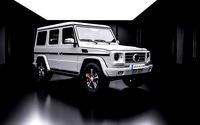
Mercedes Class
...d model mercedes class for download as 3ds, obj, c4d, and fbx on turbosquid: 3d models for games, architecture, videos. (1440493)
